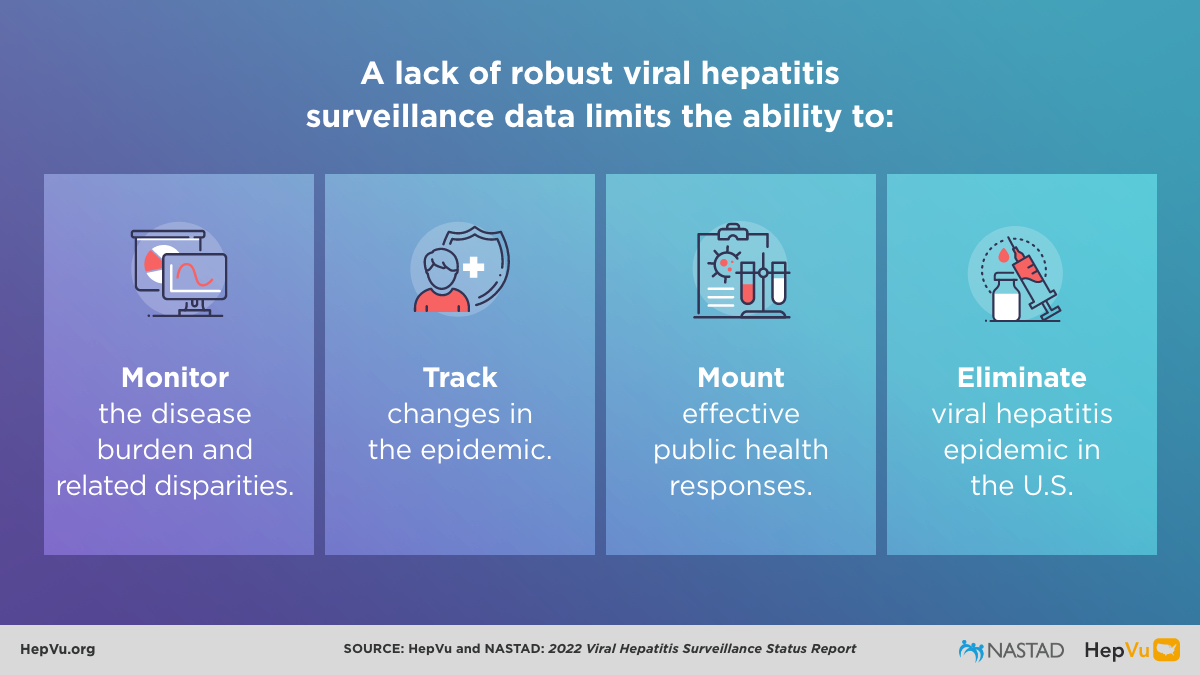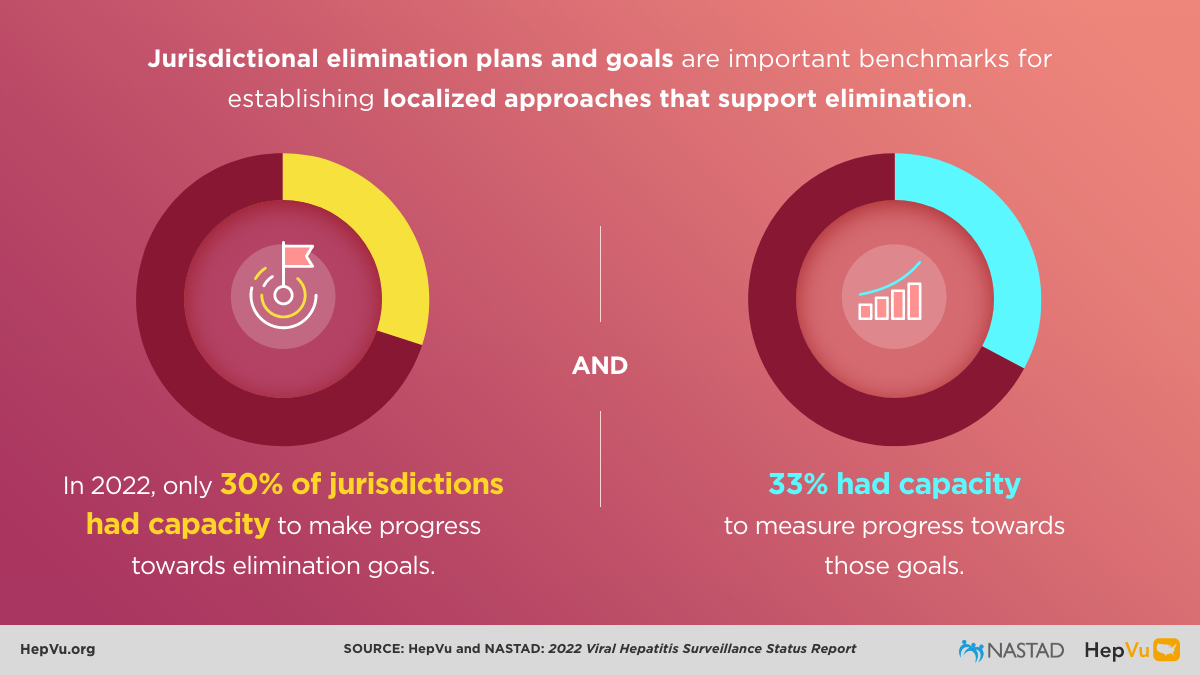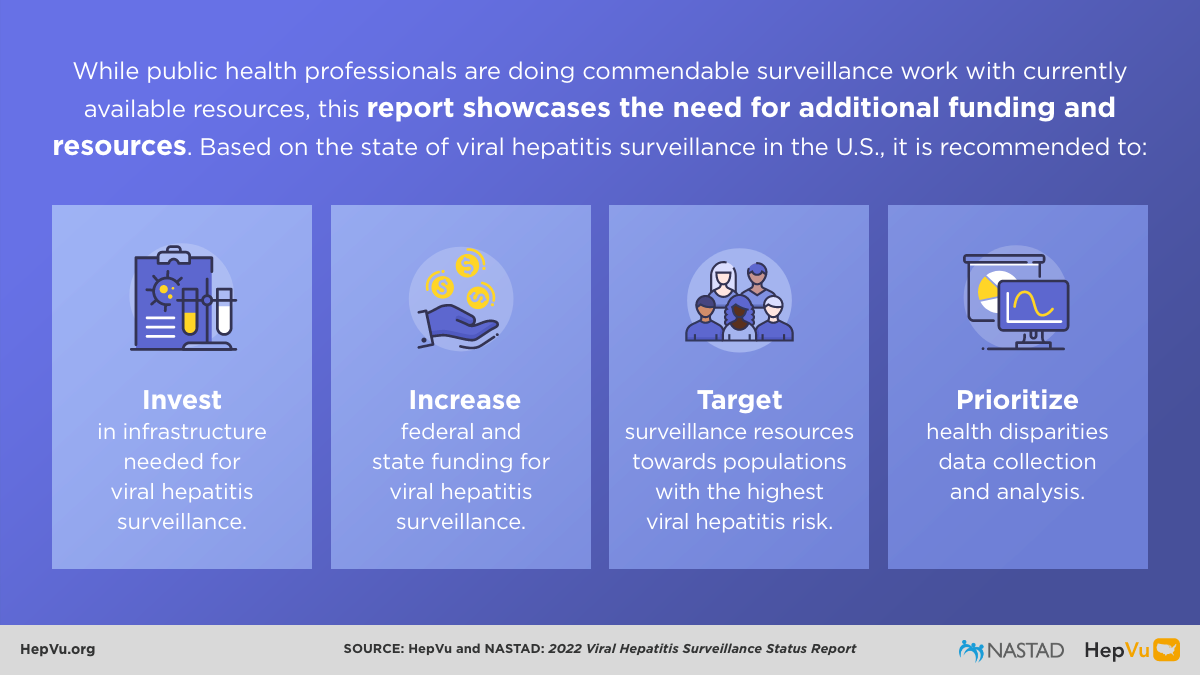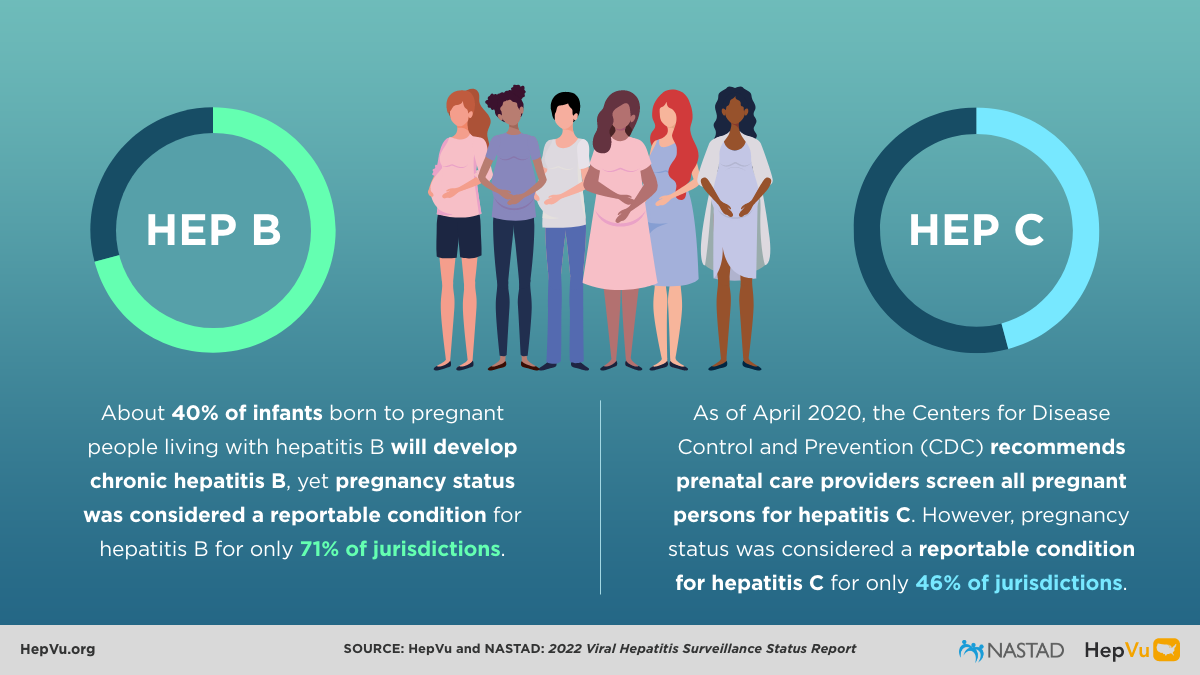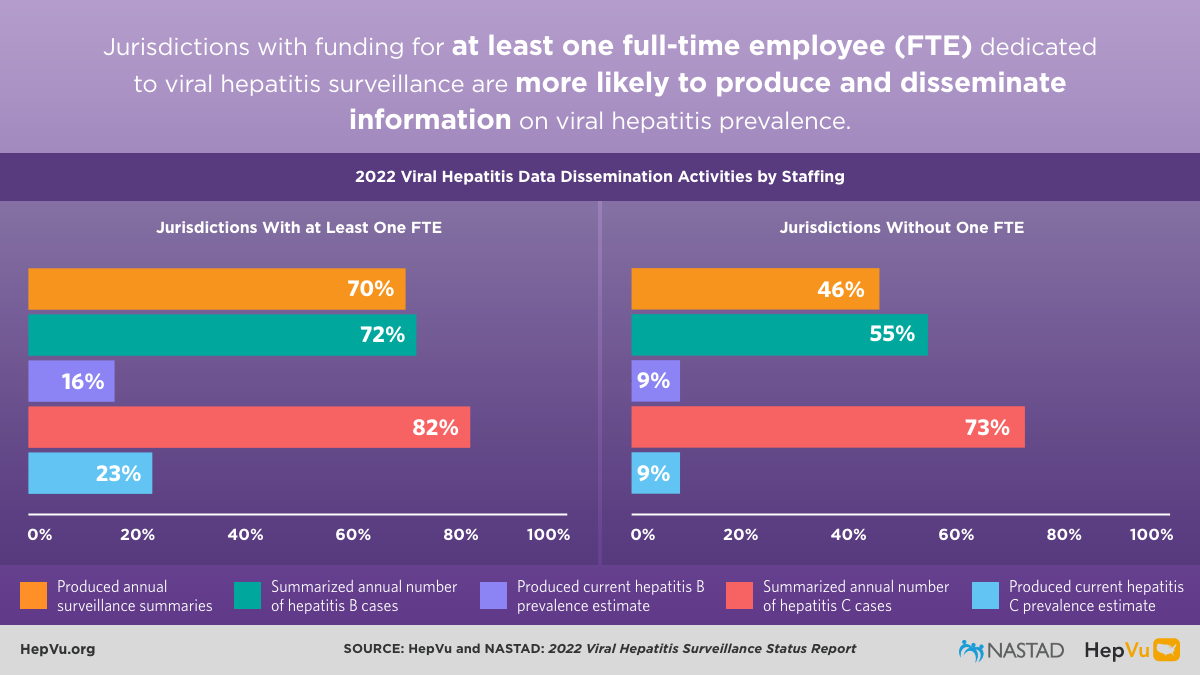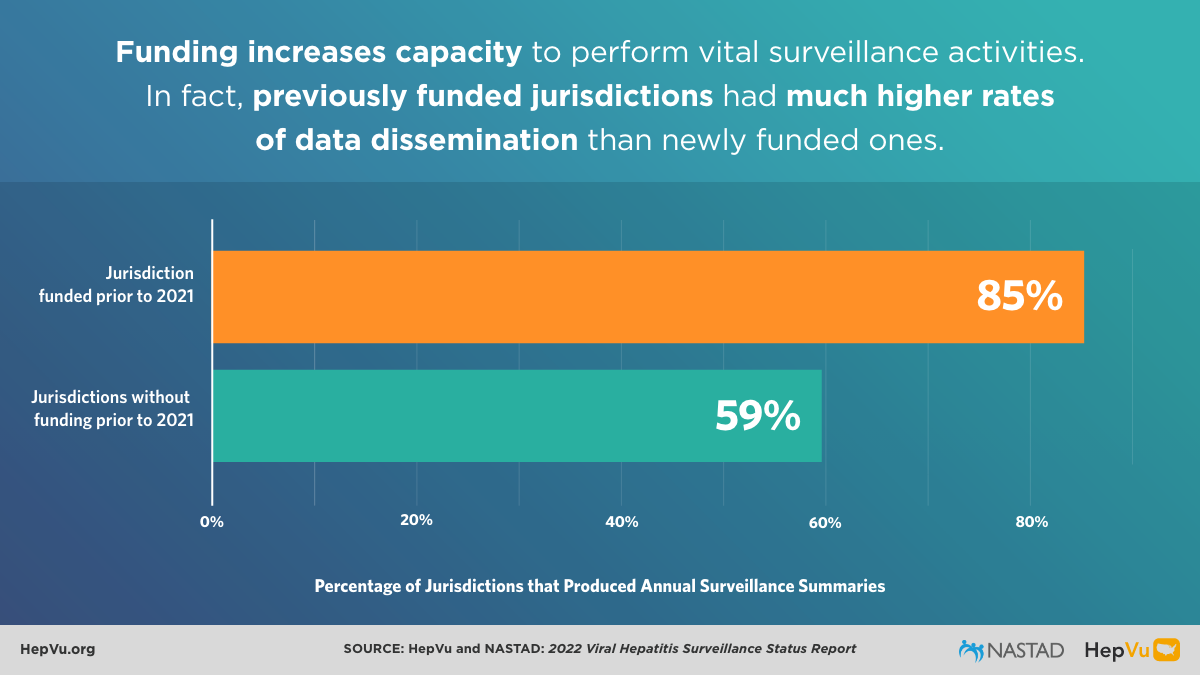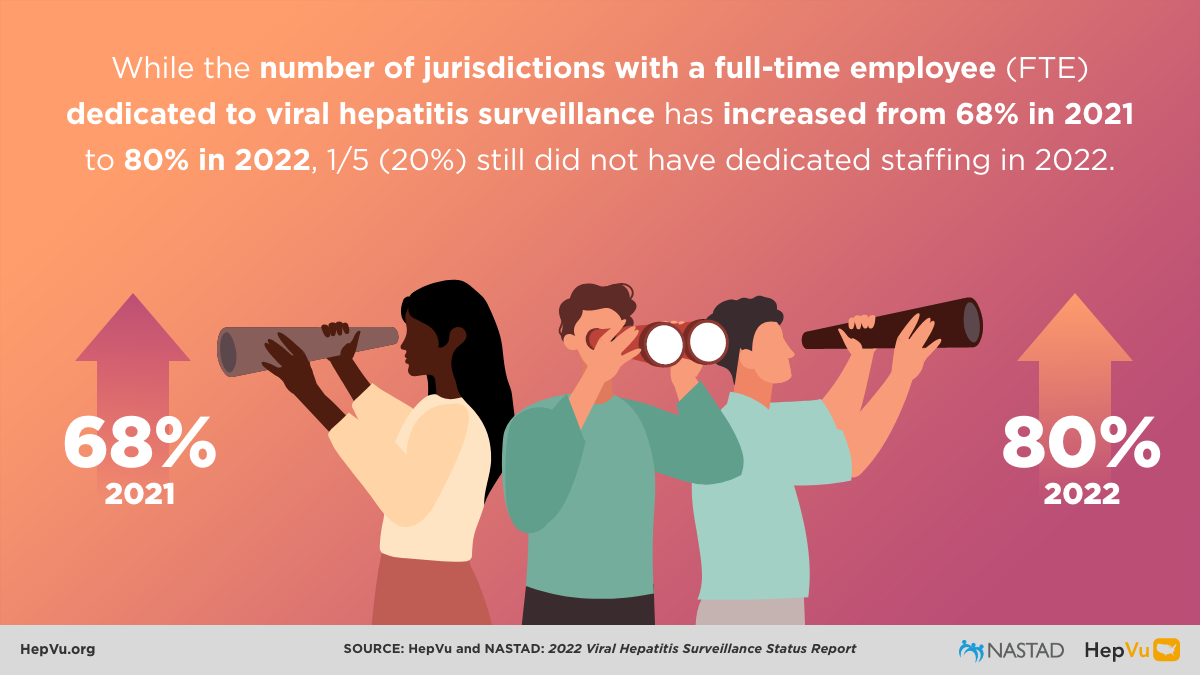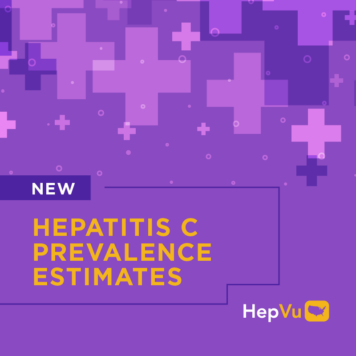Viral hepatitis surveillance is essential to elimination efforts. Robust surveillance helps monitor disease burden, track changes over time, and adjust public health efforts in the future. Today, HepVu and NASTAD released an updated viral hepatitis surveillance status report showing that U.S. jurisdictions continue to lack funding and resources needed to effectively implement viral hepatitis surveillance programs.
Use our sample social media and infographics to amplify and highlight the key findings from the 2022 Viral Hepatitis Surveillance Status Report within your networks.
Sample Social Posts
- What we’re reading today: @HepVu and @NASTAD released their updated viral hepatitis surveillance status report showing the state of viral hepatitis surveillance across U.S. jurisdictions. Read more: https://hepvu.org/viral-hepatitis-surveillance-status-report22/
- While the number of jurisdictions with a full-time employee (FTE) dedicated to viral #hepatitis surveillance has increased from 68% to 80% from 2021-2022, one fifth still did not have dedicated staffing in 2022. https://hepvu.org/viral-hepatitis-surveillance-status-report22/
- There is a lack of resources for jurisdictions to eliminate #HepC. In 2022, only 30% of jurisdictions had capacity to make progress towards their viral hepatitis elimination goals, according to @HepVu and @NASTAD. https://hepvu.org/viral-hepatitis-surveillance-status-report22/
- @CDC recommends prenatal screening for #HepC, but pregnancy status was a reportable condition for #HepC surveillance in 46% of jurisdictions. Read more in @HepVu and @NASTAD’s new viral hepatitis surveillance status report. https://hepvu.org/viral-hepatitis-surveillance-status-report22/
- Only 3% of jurisdictions said they could make progress toward elimination goals at current levels of CDC funding for hepatitis surveillance. Learn from @HepVu today: https://hepvu.org/viral-hepatitis-surveillance-status-report22/

